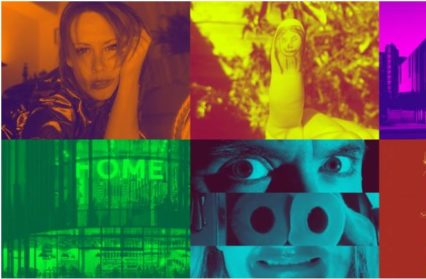Laura Kressly discusses the complex relationship between arts, arts criticism, and critics of the arts in order to understand whether or not this dynamic can, and should, continue during the current COVID-19 outbreak.
Most of the time critics and artists get on and do their respective things – artists make and share their art, critics then evaluate, contextualise and describe it. But there’s an uneasy tension between them, and conflict occasionally flares. When it does, it can be the stuff of legends. Historical bust-ups like David Storey’s 1976 swing for Michael Billington in the Royal Court bar, or not physically violent but still-cutting comments like Nick Hytner calling critics “dead, white men” in 2007, were hot topics in the press at the time and are still remembered today.
Given that Twitter has been the digital home of theatre discourse for some years now, it’s the arena where the ‘critics versus artists’ debate tends to pop up every few months or so. Arguments are often formulaic and repetitive, indicating long-running problems that haven’t been resolved, and misunderstanding between both ‘sides’ (never mind for now that there are many people who are both critics and artists; that’s a topic for another time). Artists – quite rightly – scrutinise current theatre criticism’s reduction to star ratings, lack of diversity, and critics approaching work not as what it is, but what the critic wants it to be. Critics – also quite rightly – are frustrated by declining budgets and unpaid work, overlooked and ignored independent outlets and artists’ not seeing or acknowledging criticism’s wider purpose.

Despite the current closure of all British theatre buildings, this heated discussion recently resurfaced. On the 3rd of May, performance artist Bryony Kimmings took to Twitter to express dissatisfaction with the hyper-current criticism landscape: “I don’t think art that is being made in lockdown by people who are struggling as much as the next person with mental health, money worries, Illness anxieties SHOULD BE REVIEWED!!!”. Her latest piece, a video commissioned by HOME as part of their lockdown programme, received three stars from Broadway World. This review, which she references in another tweet, was clearly quite upsetting, particularly within the current lockdown landscape.
Kimmings thoughts are certainly valid, even though the venue’s press representative invited criticism outlets to review her film. It is just unfortunate that communication between HOME and their commissioned artists didn’t address PR. A month and a half into lockdown, health and financial worries, along with the tatters of the theatre industry and its uncertain future, weigh heavily on us all. No one is doing well; everyone is fragile. Artists that still have the urge to create despite all this are trying to respond to and make sense of the world right now. Meanwhile the rest of us are relying on digital content to pass time and distract us from our very real and serious worries like unemployment, homelessness, illness and death.
Under these conditions, Kimmings’ following statement – “I would like to see one purpose of criticism at this time!” – has a fair point. With COVID-19’s fatality count over 30,000 in the UK, negatively reviewing a piece of artwork right now can certainly be considered questionable. Artists should always have the right to opt out of receiving reviews from critics who are given complementary tickets anyway, though it is impossible to prevent anyone who purchases a ticket or watches a free performance from reviewing it.
Yet despite the valid mental health-related concerns, criticism has numerous purposes both despite the current climate and especially because of it. Criticism absolutely provides audiences with a consumer guide and artists with feedback, whether they like it or not. But criticism also documents a moment in time that will soon become history, contributes to theatre’s global archive, acts as news, markets and promotes an artist and their work. Furthermore it considers the art within its wider social and cultural context, and disseminates accounts of practice to those unable to see a piece of work.
Crucially, it also furthers the dialogue that a piece of theatre begins. Luckily, we are no longer limited to a handful of broadsheet newspapers where white, Oxbridge men who veil their opinion with so-called objectivity and authority, respond to the dialogue that a theatre piece initiates. Today, a rich and wide-ranging theatre criticism landscape exists, populated by newspapers, specialist websites, blogs, vlogs and podcasts. It is run by people of all ages and all walks of life, who are ready and willing to respond to theatre and performance, and continue the conversation it initiates. This dialogue connects the performance piece to other artists, audiences and theatre past, present and future. When a show receives review coverage, it is able to be remembered, referenced and recalled beyond the network of the audience who saw it.
Like artists, theatre critics who have the capacity to review are also navigating an unknown territory. We are exploring how to write about work being created in these extraordinary times, in a digital medium we aren’t overly familiar with. We’re also balancing heightened levels of stress and worry about our friends, family and the industry that we faithfully and passionately believe in. Some of us may have had to stop reviewing for various reasons, but some of us find comfort in familiar routines of seeing a show and writing about it. In either case, we want to participate in the conversation that a piece of art initiates because in these frightening and uncertain times, we still see how important it is to document and discuss the work artists make.
Laura Kressly is a freelance theatre critic and dramaturg from the US who has been UK-based since 2004. She began reviewing in 2013 for Remotegoat and everything theatre, and founded The Play’s the Thing UK in 2015. In 2016, she co-founded the Network of Independent Critics in order to facilitate opportunities for bloggers and independent critics to review at the Edinburgh Festival Fringe. She was a fellow of the National Critics Institute at the Eugene O’Neill Theater Center in 2017. Her bylines include Exeunt, Fest Magazine, The British Council’s Theatre and Dance Blog, The Skinny, Focus Magazine, and Show-score. Kressly is currently doing a PhD on embedded theatre criticism at Royal Central School of Speech and Drama. Forthcoming publications include the co-edited volume Morgan Lloyd Malcolm’s Emilia: A Companion Reader.
Image Credit: HOME











